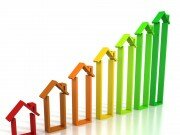
Podcast: |
I get a lot of questions regarding the purchasing of stocks that pay high dividends and I think there are some misconceptions regarding the meaning and process of owning a high dividend paying stock.
First, ask yourself how high should the dividend be? Some company’s pay 2%, some 4% and some pay 10%. Is 10% really the best?
6 Quick Tips
- Look at the ratio of the dividend to actual earnings….if a company earns 1 dollar and pays .80 cents. That could be a warning sign. Even though the dividend yield is 8%. It might not be sustainable.
- Sometimes a lower dividend paid by a company with increasing earnings and high a dividend growth rate can be better.
- Think of a dividend as a bond with an increasing coupon. What is 3% today could be 6% in 7 years.
- The excess of earnings that the company retains is your true yield. If a company earns a dollar, pays .30 cents and retains .70 cents. The intrinsic value of the company could be rising by .70 per year. On a 15 dollar stock that is an crease of about 5% in intrinsic value per year. Add the 5% to the 3% you are getting in dividend and at that price, you could have an average 8% appreciation per year.
- Stock price movements won’t affect the intrinsic value, so that is what you want to focus on.
- Low prices allow you to buy a set of earnings and cash flow for less, thereby increasing your future return. High prices do the opposite.
The Bottom Line
Dividends are only part and generally a small part of the strategy to create wealth. The best and most extreme example is BRK.
BRK has never paid a dividend and has increased from 15 per share to $150,000 per share. It has done this be keeping its earnings and reinvesting those earnings back in itself. A dividend would have dissipated the earnings.
Think twice and do your homework before investing in stocks purely for the dividend. There is a right way and a wrong way, so don’t make those classic mistakes.




















